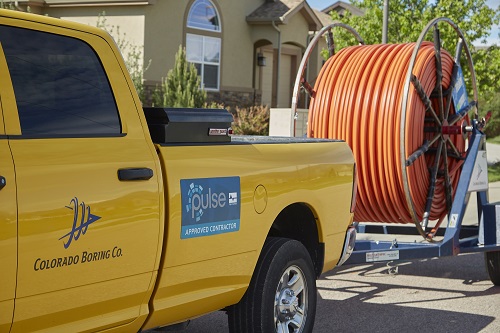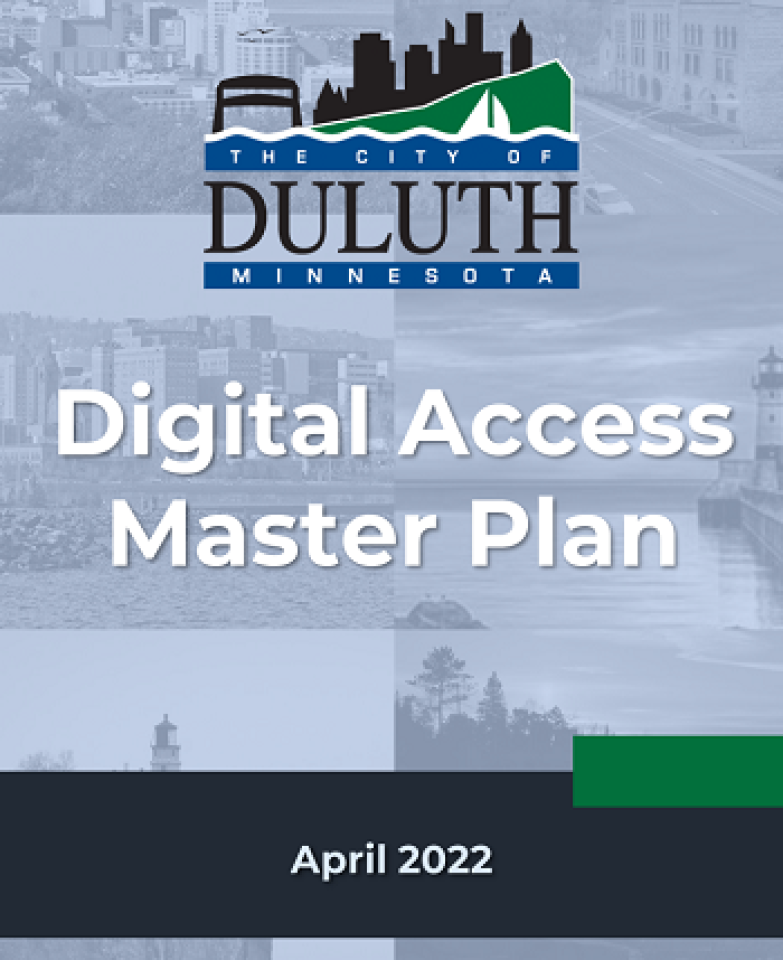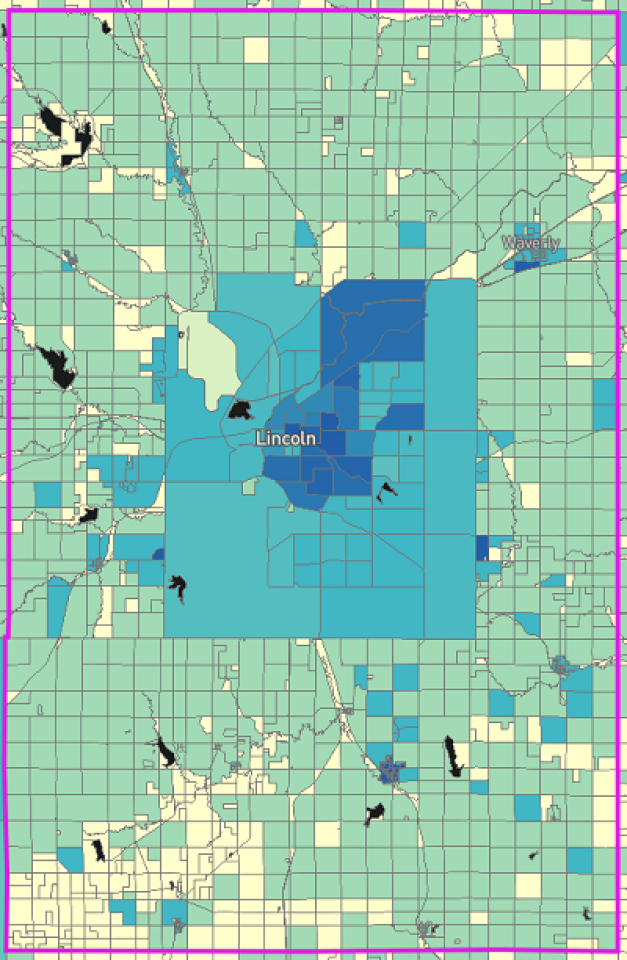
Fast, affordable Internet access for all.

Construction on a new city-owned fiber network in Cabot, Arkansas will soon bring affordable broadband access to every city resident and business in the state’s “Strawberry Capital.”
The network comes courtesy of a partnership with Connect2First, the broadband subsidiary of local power company First Electric Cooperative Corporation, which continues to build on its significant presence across Arkansas.

According to a city announcement, the $20 million network will deliver fiber access at symmetrical speeds of up to 10 gigabit per second (Gbps) via an XGS-PON network passing all 26,000 residents and businesses of Cabot using 220 miles of fiber.
The network, which is expected to take several years to complete, will be built on the back of resident-approved bonds, and won’t utilize state or federal funding.
Construction has already begun in this suburb of Little Rock where city officials say hundreds of residents have already been connected.
In announcing the beginning of construction, Cabot Mayor Ken Kincade said:
“This unique project is the first of its kind in the state of Arkansas where a municipality has built its own fiber network and partnered with a local ISP to provide high speed fiber optic internet services to its constituents. The City of Cabot is thrilled to be able to leverage the proven expertise of Connect2First, who already had a presence in the city and was currently serving surrounding areas.”

Newark, New Jersey (pop. 307k) has been operating a dark fiber network for more than a decade. In recent years, the city has expanded its efforts to leverage those assets in an incremental effort to improve connectivity and competition for local business and residents, while also building out a robust Wi-Fi network. The goal: build a portfolio of approaches to connect the last twenty percent of the city that doesn't have access today.
This week on the podcast, Christopher is joined by Aaron Meyerson, Chief Innovation Economy Officer and Director of Broadband, and Anthony Avent, Technical Operations for City of Newark, to talk about the project. From reinvigorating the city's infrastructure with a new public-private partnership, to connecting almost a hundred large business locations, to enabling innovative smart-city applications to fight heat and pollution, to supporting more than 7,200 active Wi-Fi users every day, Newark isn't just sitting around waiting for someone to help solve local challenges. They're stepping up to the plate and tackling them themselves.
This show is 28 minutes long and can be played on this page or using the podcast app of your choice with this feed.
Transcript below.
We want your feedback and suggestions for the show: please e-mail us or leave a comment below.
Listen to other episodes here or see other podcasts from the Institute for Local Self-Reliance here.
Thanks to Arne Huseby for the music. The song is Warm Duck Shuffle and is licensed under a Creative Commons Attribution (3.0) license.

A little more than three years ago, the city of West Des Moines, Iowa announced that it would build a citywide open access conduit system to lower the cost of new broadband deployment to facilitate better connections at lower costs for residents. GFiber (formerly Google Fiber), Mediacom, Lumen (formerly CenturyLink), and local ISP Mi-Fiber have since signed on as providers.
This week on the podcast, Deputy City Manager Jamie Letzring and city Innovations Consultant Dave Lyons join Christopher to talk about overcoming design and legal challenges of building an infrastructure system that remains relatively unique, and the commitment the city has made to reach economically disadvantaged households to make sure everyone has a quality and affordable connection. Finally, they share a little about how the city has been taking steps to use the new conduit system to supplement its already-robust fiber network for government facilities, smart-city initiatives, and more.
This show is 36 minutes long and can be played on this page or via Apple Podcasts or the tool of your choice using this feed.
Transcript below.
We want your feedback and suggestions for the show-please e-mail us or leave a comment below.
Listen to other episodes here or view all episodes in our index. See other podcasts from the Institute for Local Self-Reliance here.
Thanks to Arne Huseby for the music. The song is Warm Duck Shuffle and is licensed under a Creative Commons Attribution (3.0) license.
Loveland’s municipal broadband utility Pulse is a heartbeat away from expanding into a small neighboring Colorado town eager to offer its residents the same attractive, high-quality Internet access that can be found in Larimer County’s biggest cities.
Officials in Loveland and Timnath, Colorado (pop. 7,800) recently announced the ratification of an Inter-Governmental Agreement (IGA) that greenlight’s a plan to bring ubiquitous, affordable high-speed Internet access to yet another community in the Centennial State, as an increasing number of Colorado cities and towns embrace municipal broadband after years of frustration with the inadequate, high-priced service from the region’s monopoly incumbents.
"The selection of Pulse as our broadband service provider reflects a thorough process of assessment and consideration,” Timnath Town Planner Brian Williamson said in a press statement after the agreement was approved. “We are excited to work together, leveraging their expertise to ensure our residents have access to reliable, high-speed Internet that will contribute to the growth and prosperity of Timnath."
Keeping Up With The Loveland’s
This week Williamson spoke to ILSR about the project and why a town-wide fiber network is such valuable and vital infrastructure.

“Timnath is an interesting place. We are predominantly a residential community and we are growing quickly,” he said, adding that in a post-pandemic world of distance learning, remote work, and telehealth, an important part of the mix when people decide where to live and work is whether that community has reliable and affordable high-speed Internet access.

This week on the podcast, Christopher is joined by Associate Director for Communications Sean Gonsalves to check in on the move towards a citywide open access fiber-to-the-home (ftth) network in Bountiful, Utah, an expanding institutional network in Fairhaven, Massachusetts, and widespread support among small Maine towns that public dollars should go to publicly owned networks.
Along the way, they chat about the astroturf misinformation campaign being run by the Utah Taxpayer's Association, how a city negotiated a capital fee it's using to build its own network and get out from under Comcast's thumb, and the growing momentum behind Maine's Broadband Utility Districts (BUD) and their quest to improve competition and Internet access for residents.
This show is 38 minutes long and can be played on this page or via Apple Podcasts or the tool of your choice using this feed.
Transcript below.
We want your feedback and suggestions for the show-please e-mail us or leave a comment below.
Listen to other episodes here or view all episodes in our index. See other podcasts from the Institute for Local Self-Reliance here.
Thanks to Arne Huseby for the music. The song is Warm Duck Shuffle and is licensed under a Creative Commons Attribution (3.0) license.
The Tlingit and Haida Tribes will leverage $15 million in Rescue Plan funding to bring LTE-based 100 Mbps symmetrical wireless connectivity to 10,000 unserved residents in and around the city of Wrangell, located on Wrangell Island in southeast Alaska. The Internet Service Provider in charge of the buildout is the newly-launched, tribally-owned ISP Tidal Networks. The project is a pilot the tribes plan to expand to all residents of the island, and eventually to other communities in the region.
The pilot is made possible by Tlingit and Haida’s successful participation in the FCC’s Rural Tribal Priority Window, which allowed tribes to claim space on the 2.5 gigahertz spectrum band. Back in 2019, Tlingit and Haida partnered with southeast Alaska village tribes to gain access to the spectrum, and worked throughout 2021 to “discuss [Tlingit and Haida’s] broadband initiative and opportunities to partner for the broadband project.”
Utilizing Spectrum to Make Connectivity Feasible
Like countless U.S. communities, Duluth, Minnesota (pop. 86,000) got a crash course on the importance of affordable broadband during the Covid-19 crisis. Those struggles in telecommuting and home education helped fuel a dramatic new broadband expansion plan that, if approved by the city council, could revolutionize affordable access citywide.
Last April, the Duluth Economic Development Authority signed a $65,000 contract with Entrypoint LLC to examine the possibility of building a community-owned fiber network in Duluth. The result: a new Digital Access Master Plan that proposes the city spend $7-9 million to build a pilot open access fiber network in Lincoln Park next year.
“Reliable high-speed internet is no longer a luxury,” Duluth Mayor Emily Larson proclaimed in a recent state of the city address. “It’s an essential utility no less important to our future success than our roads, water, and electricity.”
A Pilot Project, and Potentially More

Under the proposal, 75 percent of the new network would be buried fiber and 25 percent would be microtrenched along public roads. The $7 to $9 million estimated price tag is based on a 60% take rate, short-term interest at 5 percent, and a long-term interest rate of 3 percent for 20 years. The initial pilot project would bring fiber to an estimated 1,900 Duluth residents next year.
“A 60% take-rate may seem aggressive given the strong market position of the incumbent cable operator,” the plan states. “However, the survey data suggests a strong desire among residents and businesses in Duluth to see competition, choice, better pricing, and the reliability of a fiber optic network.”
Like countless U.S. communities, Duluth, Minnesota (pop. 86,000) got a crash course on the importance of affordable broadband during the Covid-19 crisis. Those struggles in telecommuting and home education helped fuel a dramatic new broadband expansion plan that, if approved by the city council, could revolutionize affordable access citywide.
Last April, the Duluth Economic Development Authority signed a $65,000 contract with Entrypoint LLC to examine the possibility of building a community-owned fiber network in Duluth. The result: a new Digital Access Master Plan that proposes the city spend $7-9 million to build a pilot open access fiber network in Lincoln Park next year.
“Reliable high-speed internet is no longer a luxury,” Duluth Mayor Emily Larson proclaimed in a recent state of the city address. “It’s an essential utility no less important to our future success than our roads, water, and electricity.”
A Pilot Project and Potentially More
Under the proposal, 75 percent of the new network would be buried fiber and 25 percent would be microtrenched along public roads. The $7 to $9 million estimated price tag is based on a 60% take rate, short-term interest at 5 percent, and a long-term interest rate of 3 percent for 20 years. The initial pilot project would bring fiber to an estimated 1,900 Duluth residents next year.
“A 60% take-rate may seem aggressive given the strong market position of the incumbent cable operator,” the plan states. “However, the survey data suggests a strong desire among residents and businesses in Duluth to see competition, choice, better pricing, and the reliability of a fiber optic network.”
About ten years ago, the city of Lincoln, Nebraska (pop. 285,000) began construction on a publicly owned conduit system it would eventually lease to Internet Service Provider (ISP) ALLO Communications to enable better Internet service options to residents. That project entered its final phase in the last two years, but local officials aren’t content to stop there.
Last fall, Lancaster County (pop. 316,000), of which Lincoln is the county seat, embarked on a new conduit system to multiply its success into the future. The expansion will build upon Lincoln’s network to initiate construction into the rural parts of the county and facilitate new connectivity options to three new cities, ten villages, two census-designated places, and nine unincorporated communities.

Not Content to Sit Still
Lancaster County is situated in the southeastern corner of the state, and the second-most populous one in Nebraska.
Fixed broadband coverage, seen in the FCC Form 477 map below, shows the reality locals are contending with; good coverage in the city proper, but few options once you move into the countryside.
In the summer of 2021, Lakeland city commissioners voted 5-to-1 to strike a private-public partnership (P3) with Summit Broadband, part of a 10 year plan to expand broadband availability within city limits. But officials in this central Florida city of 112,000 have expressed growing consternation that the planned broadband expansion is behind schedule and more selective than expected.
“I think this is the right move for the City of Lakeland as it will accomplish what was my goal: to make it a smart city without the burden of bonding out our debt,” Lakeland Commissioner Bill Read said shortly after the project was announced. “The private sector can do a job much better than any public entity, better than our city.”
A year later and several city leaders don’t seem entirely sure.
Local news outlet LkldNow indicated last month that most Lakeland residents have yet to see service, and that Summit appears to have shifted its deployment priorities away from uniform house-by-house coverage, and toward select businesses and housing development developments.
Lakeland Mayor Bill Mutz said of the revelations:
I am not satisfied with the speed with which Summit is rolling out service to consumers in Lakeland and concerned that they may have de-emphasized that express concurrent desire of the commission. Whereas it has been our goal to provide commercial business with improved Internet service, the consumer emphasis was originally and consistently one of our highest expressed priorities and motivations.
City Officials Question Partners’ Apparent Shift in Strategy
Under the city’s 10 year agreement with Summit, the provider pledged to spend $20 million over the next five years expanding the city’s existing 350-mile dark fiber network. Under the deal, Summit will pay the city $144,000 per year initially, ultimately switching to paying the city 10 percent of gross revenue on Internet services.